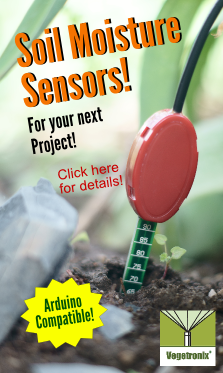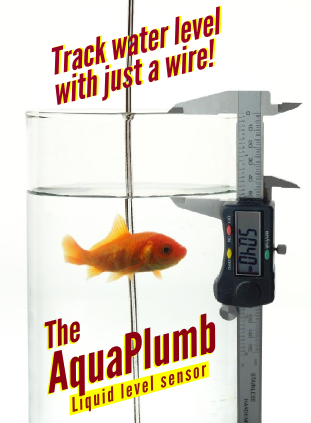Thermal Design for Linear Regulators
Linear regulators are problematic because they can generate excessive heat if their voltage differential of input to output voltage is moderately high. The input and output currents of the regulators are essentially the same. Typical regulators have a small quiescent current of a few mAs. The power which is internally dissipated by the regulator is described as follows:
| Pdis= Pin-Pout = Vin*Iin-Vout*Iout =~ (Vin-Vout)*Iin | Equation 1 |
From the last equation you can see that the power which must be dissipated from the voltage regulator is directly proportional to (Vin-Vout). In other words, you don't want to needlessly drive a linear voltage regulator with a high voltage supply. Ideally you want to drive it with a voltage just slightly higher, to minimize the power dissipation.
The thermal design question that should be asked when using a linear regulator, is "will I exceed the maximum thermal junction temperature for the device at a given maximum ambient temperature, as listed on it's data sheet?" The ambient temperature, is the temperature of the air surrounding the device. This assumed ambient temperature can vary greatly depending upon where the device is expected to operate, or if the device is enclosed.
There are two design parameters that can be controlled to prevent a regulator from reaching is maximum junction temperature. (I'm neglecting methods such as using active cooling such as refrigeration.) The first is controlling the ambient temperature. For example, you can vent your enclosure or put in a fan to make sure that the air surrounding the component is as close to the exterior air as possible. When doing an enclosure design with thermal considerations, think of the heat as a circuit. Make sure that their aren't any short circuits, or endless loops. Ideally intake and exhaust openings should be separated with maximum distance, so that the hot air isn't recycled. Likewise, remember that hot air raises, so louvers should be placed at the top for hot air to escape, and at the bottom for cold air to enter. You should create a path with baffles if necessary, so that the air is force to flow across all parts which need to be cooled.
The second design parameter is the selection of the regulators heat sink. Most data sheets will specify two thermal resistances one for junction to case and one for junction to the ambient air (the case of no heat sync). For surface mount components they will likely give a single thermal resistance for a give surface area of copper, which includes the junction to case thermal resistance. Thermal resistance, temperature and power are completely analogous to electrical resistance, voltage, and power. Therefore you can use ohms law to calculate temperature, thermal resistance, or power. Likewise, ground can be considered the ambient temperature. The key to remember is that we always want to reduce the thermal resistance. When selecting a heat sync choose the one with the lowest thermal resistance.
Before we start our thermal calculations we must first figure out how much power the voltage is drawing. This can be done empirically by hook up a small resistor with a resistance such as .1 ohms and measure the voltage across it. Using ohms law we can figure out the current. Using Equation 1 above, we can calculate the power which must be dissipated by our heat sink.
The second piece of information is the thermal resistance of the heat sync and the thermal resistance of the junction to case. As mentioned above sometimes these are combined. The temperature of the junction (Tj) can now be expressed as:
| Tj= Tamb+ Pd*(Rjc+Rs+...) | Equation 2 |
where Tamb is the ambient temperature of the air, Pd is the power dissipated, thermal resistance of the junction to case, and Rs is the thermal resistance of the heat sink. The thermal resistances add just like electrical resistances.
Example 1: Suppose we have a circuit which draws .25 amps from a voltage regulator, a heat sync which has thermal resistance of 20C/W and junction to case thermal resistance of 4C/W. Will we exceed the maximum junction temperature of 155C, if the ambient temperature is 40C.
The input voltage is 9V and the output voltage is 3V. PD is then 1.5W. Thus, Tj= 40C+ 1.5W*(20C/W+4C/W)= 76C <155C. So it will work.
Now lets look at surface mount components. According to the data sheet for LM317S, which is a TO-263 surface mount voltage regulator, the thermal resistance is lumped into a single sum which is dictated by the surface area of the heat sink. For a 0.5 sq inch heat sync the thermal resistance is specified at 50C/W, 35C/W for 1 sq inch, and asymptotically approaches 32C/2 for larger areas. In fact very little improvement is achieved for copper areas greater than 1 inch. One trick for increasing the effective area of a circuit board is to place a copper on the back side of the board with vias as thermal connections. This doesn't double the effective surface area but can increase it some.
Example 2: Suppose we have a circuit which draws .25 amps from a LM317S voltage regulator, which is surface mounted on .5 sq inches of copper. Will we exceed the maximum junction temperature of 155C, if the ambient temperature is 40C.
PD is the same as example 1 and is 1.5W. Thus, Tj= 40C+ 1.5W*(50C/W)= 115C <155C. So it will work, but has a narrow margin.
A alternative approach to a simple copper PCB heat sync, is to mount a surface mount heat sync on top of the voltage regulator. This is effectively placing the thermal resistances in parallel. Thus:
| Tj= Tamb+ Pd*(Rsa*Rs)/(Rsa+Rs) | Equation 3 |
where Rsa is the thermal resistance of the copper, and Rs that of the surface mount heat sync. This assumes that the value of Rs doesn't already incorporate an assumption about the copper. It is also an approximation, because Rsa incorporates the junction to case thermal resistance. To be more accurate this should be broken out as a series component to the other two parallel thermal resistances.
Example 3: Suppose we have a circuit which draws .25 amps from a LM317S voltage regulator, which is surface mounted on .5 sq inches of copper, and a surface mount heat sync (Rs=18C/W) is placed over it. Will we exceed the maximum junction temperature of 155C, if the ambient temperature is 40C.
PD is the same as example 1 and is 1.5W. Thus, Tj= 40C+ 1.5W*(50*18)/(50+18)C/W= 60C <155C. So it will work with a good margin.

